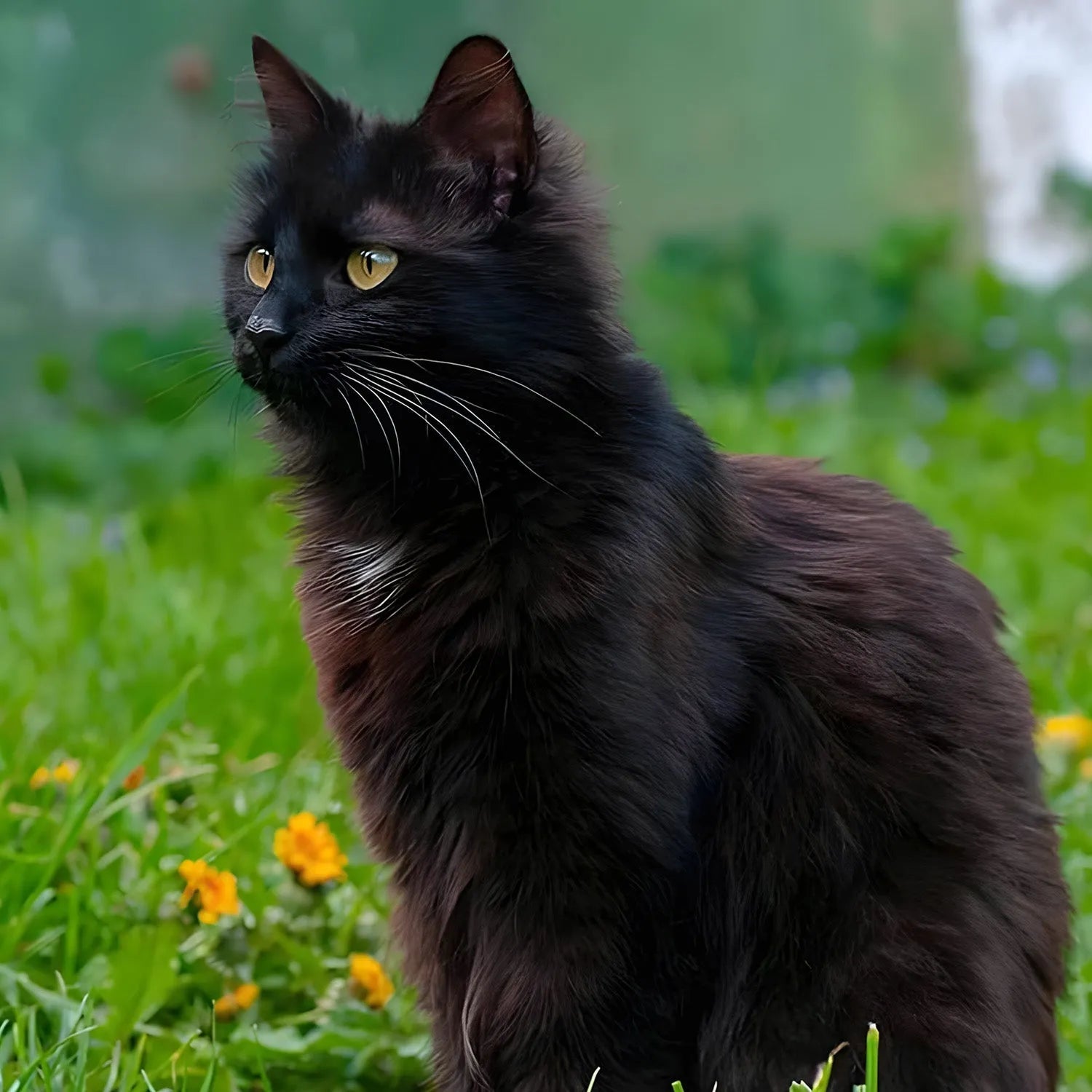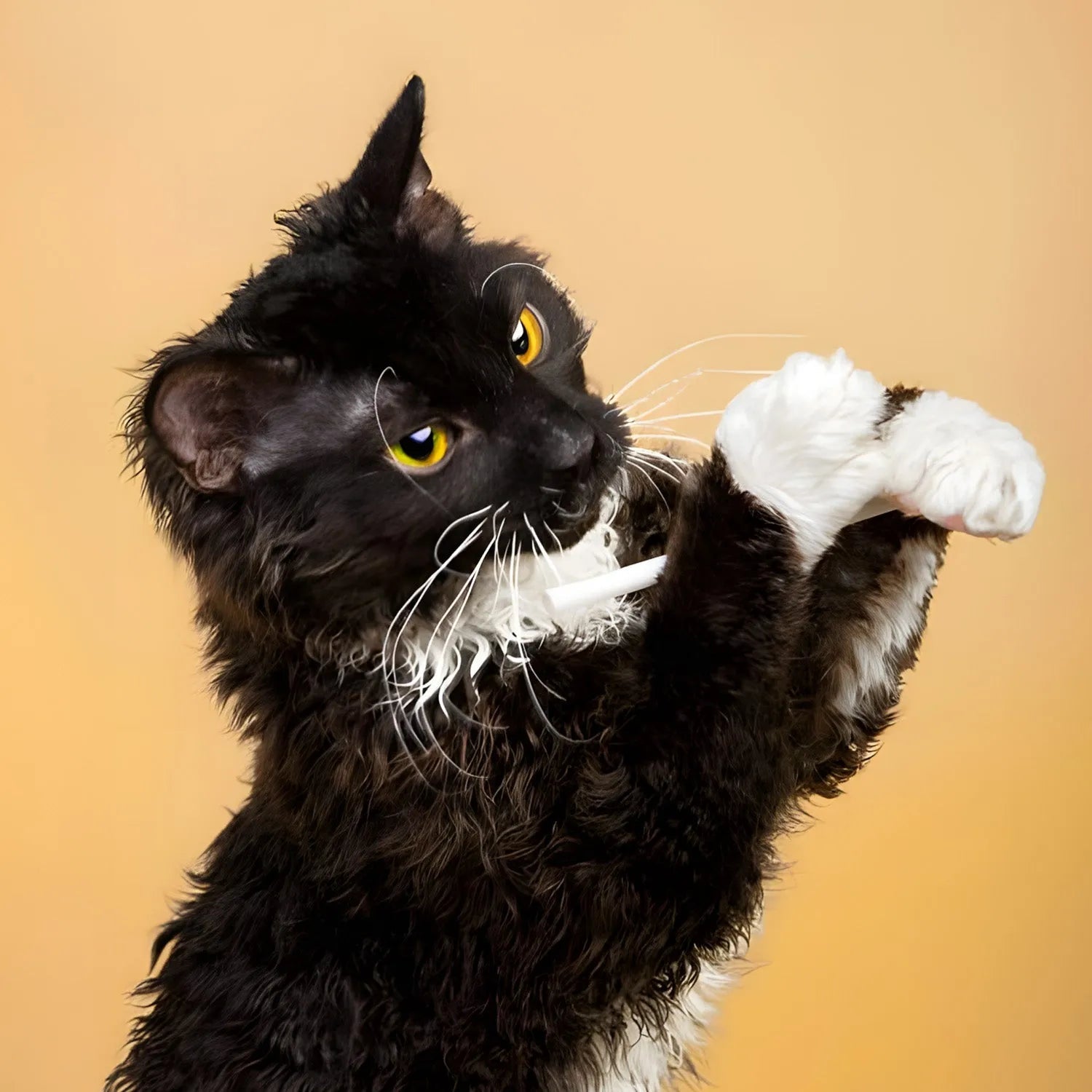Mekong Bobtail: The Enigmatic Cat with a Unique Tail
Introduction
The Mekong Bobtail is a striking breed originating from Southeast Asia, particularly around the Mekong River region. Known for its distinctive short, curled tail, the Mekong Bobtail is a playful, affectionate, and intelligent cat that thrives in a family environment. With their charming personalities and unique appearance, Mekong Bobtails have gained popularity among cat enthusiasts worldwide. In this blog, we’ll delve into their lifestyle, behavior, grooming needs, and interactions with humans and other pets.
Ratings (1-5)
-
Environmental Adaptability: 4
-
Food Consumption: 3
-
Need for Companionship: 5
-
Trainability: 4
-
Tolerance of Children: 5
-
Ease of Domestication: 4
History and Origins
The Mekong Bobtail is deeply rooted in Southeast Asian culture and has been featured in local folklore for centuries. Traditionally, these cats were considered sacred and were often associated with good fortune and protection against evil spirits. Their unique appearance, particularly their short, bobbed tails, is believed to be a result of natural mutation rather than selective breeding. This breed gained recognition outside its native region in the 1990s and has since become increasingly popular among cat lovers around the world.
Physical Characteristics and Colors
The Mekong Bobtail is easily recognized by its short, curled tail, which often resembles a pom-pom. Their bodies are medium-sized, muscular, and well-proportioned, giving them a graceful and agile appearance. Their large, almond-shaped eyes can come in various colors, including blue, green, or gold. Mekong Bobtails have a short, soft coat that comes in various colors and patterns, including solid, tabby, bicolor, and more. Their striking appearance, combined with their playful nature, makes them a delightful addition to any home.
Lifestyle and Behavior
Mekong Bobtails are known for their playful and energetic nature. They are highly social cats that thrive on interaction with their human companions. These cats are curious and enjoy exploring their environment, often engaging in playful activities that mimic hunting behaviors. They are known for their intelligence and can easily become bored if not provided with adequate stimulation, so interactive toys and regular playtime are essential. Mekong Bobtails are affectionate and tend to follow their owners around, often seeking attention and companionship.
Trainability and Intelligence
Mekong Bobtails are intelligent cats that respond well to training. They can learn various commands and tricks, particularly when positive reinforcement techniques, such as treats and praise, are employed. They enjoy interactive play that challenges their minds, such as puzzle toys or games that involve problem-solving. Regular training sessions can help keep them mentally stimulated and strengthen the bond between the cat and its owner. Their playful and curious nature makes them eager learners, making training a fun experience for both the cat and owner.
Social Behavior and Human Interaction
Mekong Bobtails are known for their friendly and sociable nature. They are affectionate cats that thrive on human interaction and are often described as "people-oriented." These cats are known to bond closely with their families, often following their owners from room to room. They enjoy being involved in family activities and are generally good with children, making them excellent companions for families. Their gentle demeanor allows them to get along well with other pets, including dogs, provided they are properly introduced.
Compatibility with Children and Other Pets
Mekong Bobtails are particularly tolerant of children and can be a wonderful addition to family households. Their playful nature makes them suitable companions for kids, as they enjoy interactive play and are generally patient. Mekong Bobtails also tend to adapt well to living with other pets, including dogs and other cats, as long as they are socialized properly from a young age. Their friendly disposition allows them to form bonds with various family members and pets, creating a harmonious household environment.
Grooming and Care
The grooming needs of a Mekong Bobtail are relatively low due to their short coat. Regular brushing, about once a week, is sufficient to remove loose hair and keep their coat looking healthy. During shedding seasons, more frequent brushing may be required to manage loose fur. Regular dental care, ear cleaning, and nail trimming are essential to maintain their overall health. Bathing is generally not necessary unless the cat gets particularly dirty, as Mekong Bobtails are good at keeping themselves clean. Establishing a grooming routine can also serve as a bonding activity between the cat and its owner.
Health and Lifespan
Mekong Bobtails are generally healthy cats, but they can be prone to certain genetic conditions. Regular veterinary check-ups are important to monitor their health and address any concerns early on. A balanced diet and proper care can help prevent obesity and related health issues. With appropriate care, Mekong Bobtails typically have a lifespan of 12-15 years or more. Ensuring a healthy lifestyle, including regular exercise and mental stimulation, can contribute to their longevity.
Environmental Adaptability
Mekong Bobtails are adaptable cats that can thrive in various living environments, including apartments and homes. They enjoy being indoors but also appreciate having access to a safe outdoor space where they can explore. Their playful nature and curiosity make them well-suited for environments where they can engage in interactive play and mental challenges. Providing them with a stimulating environment that caters to their need for exploration and interaction is key to their happiness.
Feeding Requirements
A balanced diet is crucial for maintaining the Mekong Bobtail's energy levels and overall health. High-quality cat food that is rich in protein is recommended, and fresh water should always be available. Because Mekong Bobtails are active cats, they may require more calories than less active breeds. It’s essential to monitor their diet and consult a veterinarian for specific recommendations based on age, weight, and activity level. Preventing obesity is important, as Mekong Bobtails can be prone to overeating if not managed properly.
Conclusion
The Mekong Bobtail is a unique and affectionate breed that brings joy and companionship to any home. Their playful nature, intelligence, and strong bonds with their human families make them wonderful pets for individuals and families alike. If you’re looking for a loving and engaging companion, the Mekong Bobtail may be the perfect fit for you.
For more information about other cat breeds and pet care tips, stay tuned to our blog!
References:
-
Nguyen, T. (2022). "The Mekong Bobtail: A Breed Like No Other." *Feline Insights*, 40(1), 88-95.
-
Smith, L. (2021). "Understanding the Mekong Bobtail: Care and Characteristics." *Cat Care Journal*, March issue, pp. 22-30.
-
Tran, H. (2020). "A Guide to the Unique Traits of Mekong Bobtails." *Journal of Southeast Asian Felines*, 15(4), 50-60.


